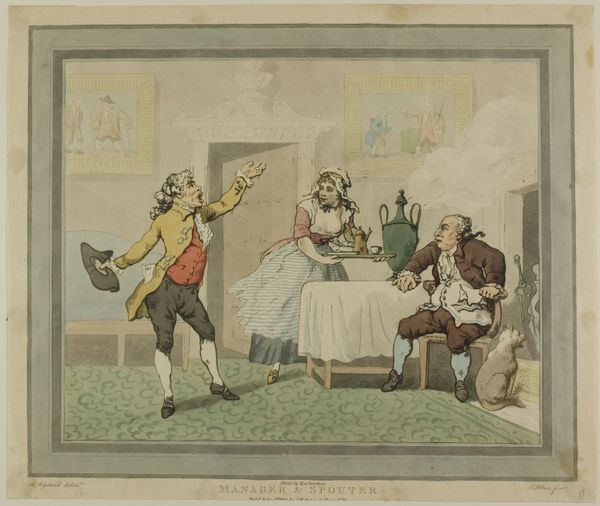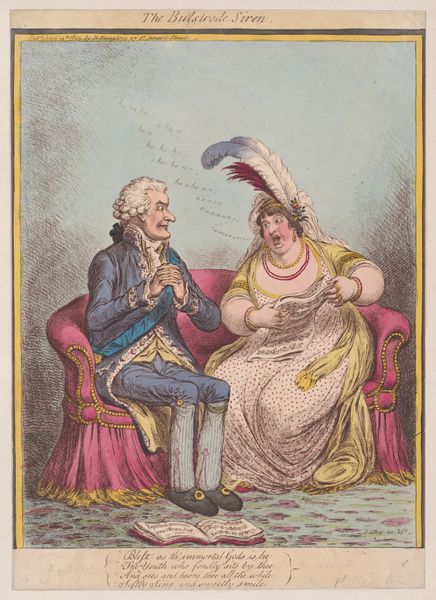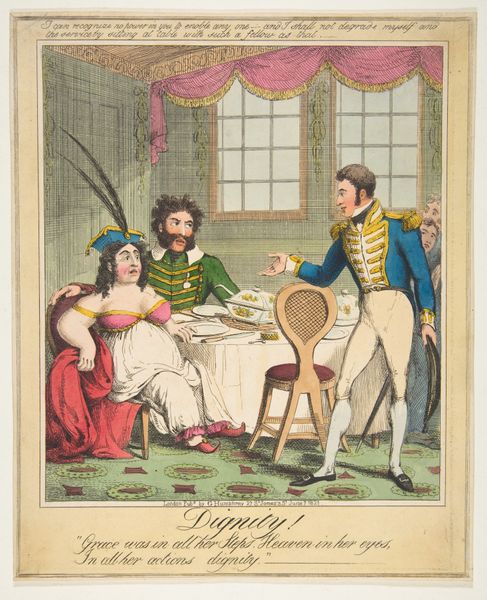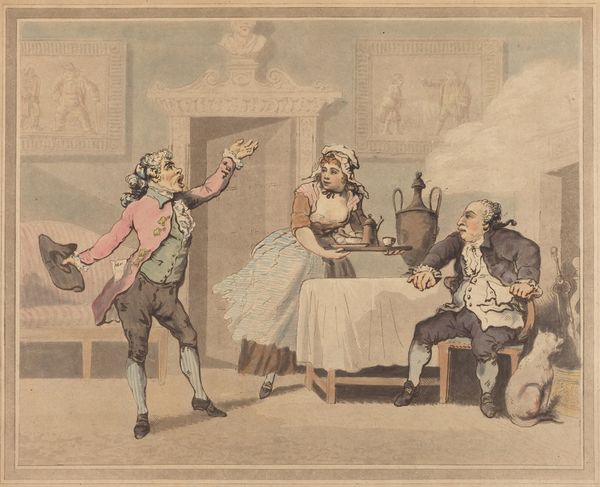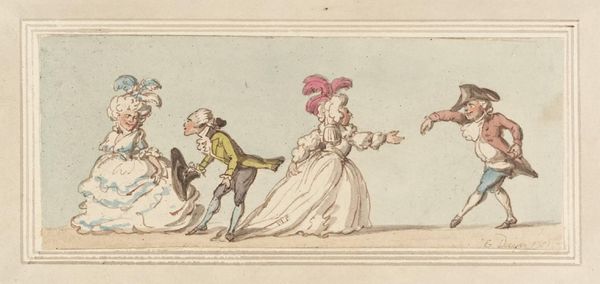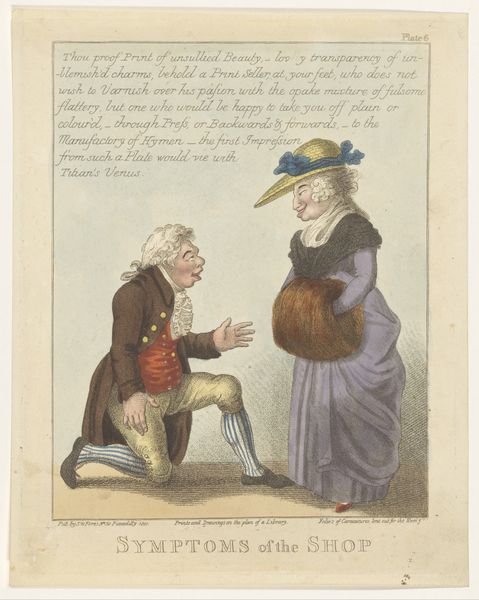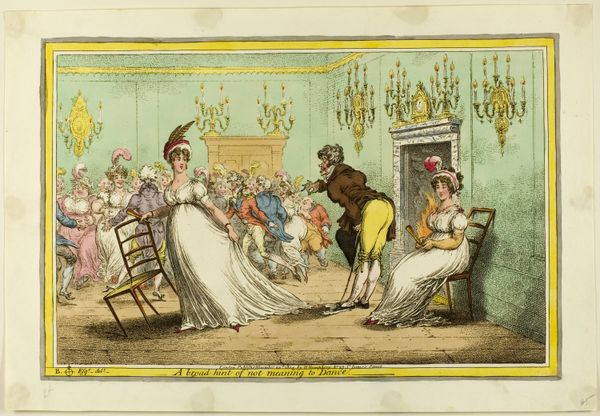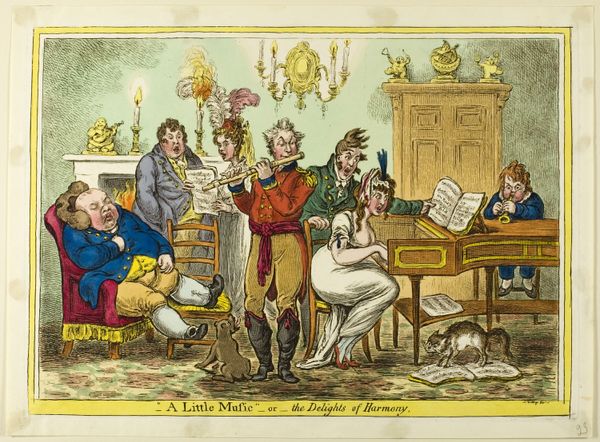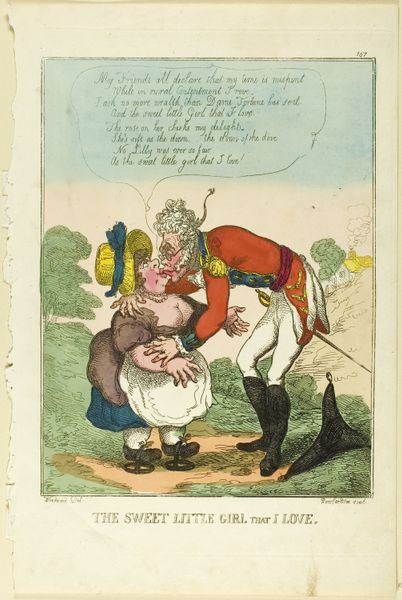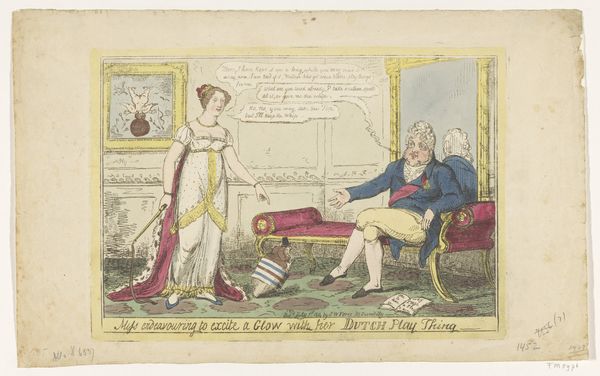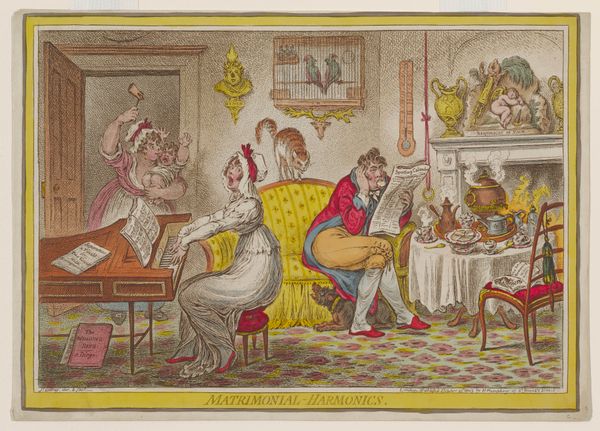
And Would'st Thou Turn the Vile Reproach on Me? Possibly 1807
0:00
0:00
drawing, coloured-pencil, print, etching, paper
#
portrait
#
drawing
#
coloured-pencil
# print
#
etching
#
caricature
#
caricature
#
paper
#
coloured pencil
#
romanticism
#
genre-painting
#
history-painting
Dimensions: 232 × 333 mm (image) 245 × 345 mm (plate/sheet)
Copyright: Public Domain
Editor: We're looking at "And Would'st Thou Turn the Vile Reproach on Me?", a colored etching by James Gillray, probably from 1807. It depicts a rather…strained domestic scene. What jumps out at me is the exaggerated caricatures – the man looks almost grotesque. What do you see in the composition that strikes you? Curator: The power of Gillray's print resides precisely in that formal tension. Observe how the artist orchestrates the composition using contrasting lines and shapes. The pregnant woman's soft, rounded form sharply opposes the jagged angles and grotesque features of the man. Consider the placement of figures: his diagonal lean away versus her static pose perpendicular to his direction, further amplifies the visual disharmony. Editor: So, it's the tension in their shapes and stances, rather than their facial expressions, that carries the emotional weight? Curator: Indeed. Though facial expressions play their part, they are secondary to the abstract visual language. Notice too how Gillray uses color – the sickly pastel hues amplify the underlying unease. The yellow chair on which the gentleman rests is almost lurid. One might be inclined to assume he’s unwell, yet still retains his posture as a dominating figure within the composition. Editor: It's interesting how the color choices contribute to that feeling. It’s much more than just the characters. Curator: Precisely. And what of the background details – the small pictures and statues? How do these relate to the primary drama? They are deliberately composed using semiotics in order to influence and give us a sense of deeper historical contexts. Do these visuals serve only as decoration? I’d be eager to hear your thoughts on the implied connections they establish within the picture's syntax. Editor: I had initially thought it was about class. Seeing it from a formalist viewpoint broadens my understanding to composition and the use of symbolism that adds deeper significance. Curator: Precisely. Gillray transcends simple satire, crafting a visually complex commentary using these artistic mechanisms. It reveals how, as a visual communication mechanism, it conveys the subject, subtext, and all surrounding social dynamics.
Comments
No comments
Be the first to comment and join the conversation on the ultimate creative platform.
